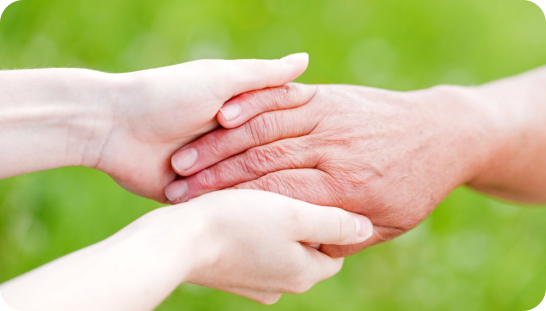Recognizing the Signs of Stroke: How to Act Quickly and Provide Assistance

Strokes are life-threatening medical emergencies and can cause irreversible damage to the brain if not treated quickly. It’s essential for everyone to understand and recognize the signs of stroke so that they can act promptly and provide the necessary assistance and care.
Signs of a stroke can be difficult to spot and properly identify due to the fact that most are non-specific and can range from minor to severe. The manifestation of symptoms may vary depending on where in the brain the disease has affected and its severity. That’s why early recognition and treatment are crucial. Prompt intervention allowed for improved chances of recovery, reduced brain damage, and increased patient survival.
In this blog post, we’ll dive into strokes, including what they are, the warning signs to look out for, and ways to prevent them. Let’s get started!
Understanding What Stroke Is
Strokes are serious medical conditions that can have a profoundly negative impact on the lives of those who suffer from them. It occurs when the flow of blood to an area of the brain is blocked or interrupted. This can cause the brain cells to become damaged or even die. In the event of a stroke, movement, thinking, feeling, and speech can be affected. It can also cause paralysis or difficulty walking. While some stroke victims may recover fully, others may experience lasting effects. In some cases, a stroke can even be fatal.
Early recognition of the signs of stroke is essential for reducing permanent disability or death. Time is of the essence when it comes to stroke treatment, as prompt action can minimize the damage caused.
The three main types of strokes are as follows:
- Hemorrhagic stroke: It occurs when a blood vessel in the brain breaks suddenly and violently. It may result in hemorrhages or bleeding into the brain. High blood pressure, aneurysms (weak spots on blood vessel walls), and certain infections are among the known causes.
- Transient ischemic attack (TIA): It’s also sometimes called a “mini-stroke.” In contrast to other types of strokes, TIAs affect the brain for only a short time, usually no more than five minutes. However, it’s important to understand that they are warning signs of a future stroke and should be taken seriously.
- Ischemic stroke: When the arteries and vessels that supply the brain with blood become narrowed or blocked, the result is severely reduced blood flow (ischemia). It is the most frequent type of stroke, making up approximately 87% of all cases.
Recognizing the Signs & Symptoms of Stroke

Knowing the signs and symptoms of stroke is vital for prevention and early treatment. While the exact causes of stroke vary, there are some general warning signs for which everyone should be on the lookout. Here are the most common symptoms of this condition:
1. Trouble speaking
People may experience difficulty speaking, such as slurred speech, difficulty expressing themselves clearly, or trouble finding the right words. They may also be unable to comprehend what someone is saying to them. In addition, they may be confused and unable to follow simple commands.
2. Numbness
There is a sudden loss of sensation in some parts of the body, like the face, arm, or leg. This can sometimes be accompanied by a tingling or burning sensation in the affected area. A stroke can cause one side of the body to be numb while the other side remains fully functional.
3. Severe Headache
An intense headache is characterized by a throbbing or pounding sensation on one side of the head. The pain can sometimes spread to other parts, including the neck and shoulders. There is often neck stiffness and nausea associated with this headache.
4. Loss of Balance
Sudden or gradual loss of balance can cause a person to feel unsteady, shaky, and unable to walk properly. This can lead to swaying, stumbling, dropping objects, and falling. Loss of balance is a common symptom of stroke, and it can be a serious warning sign of neurological impairment. While it may be a temporary issue in certain cases, it can have an impact on a person’s coordination and mobility for longer durations.
5. Dizziness
Feeling lightheaded, dizzy, or confused, as if everything is moving or spinning around, is a common stroke symptom. Other symptoms like a loss of balance and unsteadiness can also accompany dizziness. When dizziness is a stroke symptom, it can be intense and cause significant disorientation, making it difficult to move or stand.
6. Visual Changes
Vision changes are common. The eye may move in directions it doesn’t normally go, including side to side or up and down instead of forward and backward. Someone experiencing visual changes may experience double vision or the inability to focus.
Difficulty walking as a sign of stroke may be sudden or gradual. The person may have trouble moving one or both legs, getting up from the floor, and needing assistance completing tasks like brushing their hair.
7. Confusion
This confusion can manifest in different ways, such as memory loss, difficulty understanding or responding to questions, or disorientation. It may also be difficult for the person experiencing the stroke to carry on a conversation. In addition, they may become easily agitated and struggle to concentrate.
8. Weakness
Weakness is also a common sign of stroke. It may affect the person’s ability to walk, talk, and move limbs. A sudden onset of weakness can render its victims immobile and restless, but it can also lead to more severe symptoms such as paralysis or loss of control over breathing.
Factors That Can Help Prevent Strokes

Stroke is a serious medical condition, and there are a number of factors that can increase the likelihood of having one. Some of these risks are beyond our control, but others can be managed. Knowing what can contribute to stroke risk is key to taking steps to lower it. Here are a few suggestions to help reduce the chances of a stroke:
1. Abstain from Smoking
Smoking is one of the most dangerous habits for your health, especially concerning stroke prevention. Smoking can lead to a buildup of plaque in the arteries, which can block blood flow to the brain and cause a stroke. Quitting smoking can significantly reduce the risk of stroke and improve your overall health and quality of life. If you are a smoker, you should talk to your doctor about ways to quit safely, such as nicotine replacement therapy and counseling.
2. Eat healthily
Maintaining a balanced diet is essential for stroke prevention. This includes eating plenty of fruits, vegetables, whole grains, and lean proteins. Make sure to limit sodium, saturated fats, and added sugars intake. Eating foods rich in potassium, magnesium, and calcium can also help reduce your risk of stroke.
3. Exercise Regularly
Moderate exercise has a wide range of benefits, including improved cardiovascular health and reduced risk of stroke. Regular exercise has been shown to increase blood flow, strengthen the heart muscle, lower cholesterol and improve overall health. Aim to participate in activities that fit your schedule, whether an intense workout or a 30-minute walk.
For older adults, the benefits of exercise are even greater. People who regularly participate in physical activity have a lower risk of developing chronic conditions, including heart disease and stroke.
4. Limit Alcohol Intake
Alcohol can cause several health problems, including increased blood pressure, inflammation, and an elevated risk for stroke. In general, it is recommended that people limit alcohol consumption to prevent a variety of health issues. This is especially true for older adults, as moderate drinking can cause serious health problems. If you feel you cannot give up alcohol, you must talk to your doctor about safe consumption levels.
5. Manage Stress Levels
Stress is a major factor in developing chronic diseases, including stroke. Stress regularly managed through mental health therapies and healthy lifestyle habits can help you cope with stressful situations and maintain your overall health. Talk to your doctor about meditation, cognitive behavioral therapy, or other stress management methods to reduce the risk of stroke. Whichever approach is best for you, the goal is to harness your mind’s ability to remain calm under stress and reduce its impact on your body.
6. Monitor Blood Pressure

Regularly checking your blood pressure is essential to preventing a stroke. Managing your blood pressure is simple; you need to make sure that you are checking it at least once a year. When your blood pressure is consistently higher than normal, it can lead to serious conditions such as stroke and heart disease.
7. Maintain a Healthy Weight
Many people who have a stroke are already overweight or obese before the event. This can indicate that they are at an increased risk of developing heart disease when they age. The best defense against stroke is maintaining a healthy weight, diet, and physical activity habits that help you keep your weight under control.
Final Thoughts
Stroke is a serious matter, but with proper treatment and care, the risk of having a stroke can be reduced. With the right preventative measures, you can significantly lower your chances of having one.
Are you or your loved ones at risk of stroke? Or are you worrying about the possibility of a stroke? If so, Serenity Senior Care is here to help!
At Serenity Senior Care, we strive to provide your loved ones with the highest quality of care and support. Our Home Care and Nursing Services are designed to meet the specific needs of seniors or anyone else requiring additional assistance. Rest assured that we will always do our utmost to ensure you and your loved ones have access to the best possible care.
To learn more about our services, contact us today!


